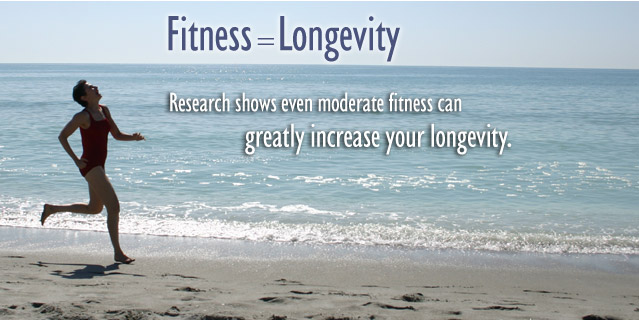 Loading... Please wait...
Loading... Please wait...- Home
- COACH
- Moving Free™
- SHOP
- CLUB
- ART
- FABULOSITY®
- BIO
- CONSULT
- AMAZON
-
Live Long
- Diet & Nutrition
- Easy Exercise Videos Mirabai Holland
- Fitness Longevity
- Fabulous Forever After 50 Mirabai Holland
- Senior Exercise Videos Mirabai Holland
- Baby Boomer Exercise Mirabai Holland
- Beginner Exercise Videos Mirabai Holland
- Moving Free
- Weight Loss
- Cardio
- Strength
- Flexibility
- Body Type
- Stress Reduction
- Medical Care
-
Health
- Exercise and Memory Issues
- Chronic Stress: How To Get Rid Of It
- Exercise & Heart Disease
- Exercise & Diabetes
- Exercise & Autoimmune Diseases
- Osteoporosis
- Exercise for Arthritis
- Back Pain
- Exercise & Orthopedic Issues
- Coping With Cancer
- Pulmonary Asthma
- Exercise And Parkinson's Disease
- Perimenopause & Menopause
- Exercise & Depression
- Sleep Better with Exercise
- BLOG
- Contact
Categories
Our Newsletter
Fitness Longevity

Research shows even moderate fitness can greatly increase your longevity.
*(See study below)
Where to begin?
If you haven’t been physically active or done regular exercise for a while, it may be hard to know what to do.
Switching suddenly from a sedentary lifestyle to joining a gym in pursuit of the “hard body” fitness model is not only unrealistic for most people -- it could result in injury when your body is not used to any exercise at all.
There’s a better option – one without stress, one without pressure. It’s Moving Free® Ease-in Click each picture to learn more about each
It’s Moving Free® – a time each day you give yourself to rediscover the kind of movement that makes you feel good – that nurtures you, bringing warmth to your muscles and better circulation for a clearer mind. Without forcing yourself to fit some ideal image, you can move in your own way, spontaneously and naturally.
Physical fitness and all-cause mortality. A prospective study of healthy men and women.
Blair SN, Kohl HW 3rd, Paffenbarger RS Jr, Clark DG, Cooper KH, Gibbons LW.
Institute for Aerobics Research, Dallas, Tex 75230. We studied physical fitness and risk of all-cause and cause-specific mortality in 10,224 men and 3120 women who were given a preventive medical examination. Physical fitness was measured by a maximal treadmill exercise test. Average follow-up was slightly more than 8 years, for a total of 110,482 person-years of observation. There were 240 deaths in men and 43 deaths in women. Age-adjusted all-cause mortality rates declined across physical fitness quintiles from 64.0 per 10,000 person-years in the least-fit men to 18.6 per 10,000 person-years in the most-fit men (slope, -4.5). Corresponding values for women were 39.5 per 10,000 person-years to 8.5 per 10,000 person-years (slope, -5.5). These trends remained after statistical adjustment for age, smoking habit, cholesterol level, systolic blood pressure, fasting blood glucose level, parental history of coronary heart disease, and follow-up interval. Lower mortality rates in higher fitness categories also were seen for cardiovascular disease and cancer of combined sites. Attributable risk estimates for all-cause mortality indicated that low physical fitness was an important risk factor in both men and women. Higher levels of physical fitness appear to delay all-cause mortality primarily due to lowered rates of cardiovascular disease and cancer.
We studied physical fitness and risk of all-cause and cause-specific mortality in 10,224 men and 3120 women who were given a preventive medical examination. Physical fitness was measured by a maximal treadmill exercise test. Average follow-up was slightly more than 8 years, for a total of 110,482 person-years of observation. There were 240 deaths in men and 43 deaths in women. Age-adjusted all-cause mortality rates declined across physical fitness quintiles from 64.0 per 10,000 person-years in the least-fit men to 18.6 per 10,000 person-years in the most-fit men (slope, -4.5). Corresponding values for women were 39.5 per 10,000 person-years to 8.5 per 10,000 person-years (slope, -5.5). These trends remained after statistical adjustment for age, smoking habit, cholesterol level, systolic blood pressure, fasting blood glucose level, parental history of coronary heart disease, and follow-up interval. Lower mortality rates in higher fitness categories also were seen for cardiovascular disease and cancer of combined sites. Attributable risk estimates for all-cause mortality indicated that low physical fitness was an important risk factor in both men and women. Higher levels of physical fitness appear to delay all-cause mortality primarily due to lowered rates of cardiovascular disease and cancer.



